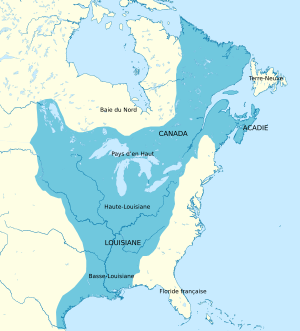Correction girls facts for kids
Correction girls was a name for young women who were sent from France to its colonies in America during the early 1700s. The French government sent them to become wives for the settlers in places like Louisiana. This was part of a plan to help the new colonies grow and become stronger.
Why France Sent Women to the Colonies
France wanted to build strong colonies in Louisiana in the late 1600s and early 1700s. These colonies were important for France to keep control of its lands in America. However, many settlers did not want to stay. Some wanted to go back to France, and others were more interested in exploring and hunting than in farming.
The French leaders believed that if settlers married and started families, they would be more likely to stay. This would help the colonies become more stable.
In 1699, Pierre Le Moyne d'Iberville, who started the Louisiana colony, asked King Louis XIV for permission for French settlers to marry Native American women. He thought this would help the colony and bring local tribes closer to French culture. But it didn't work as planned. Settlers who married Native American women often chose to live like them.
Governor Jean-Baptiste Le Moyne de Bienville thought this was not good for the colony's growth. He believed settlers should marry French women instead.
The first group of women sent to Louisiana were called the casquette girls or Pelican girls. They were often orphans or from convents and were chosen for being good and religious. But when they arrived, they found conditions in the colony were much harder than they expected. Many of the men they were supposed to marry were not what they hoped for. The women complained, but the government ignored them, and ship captains would not take them back to France. Because of their experiences, few other French women wanted to move to Louisiana.
Women Sent to the Colonies
Between 1712 and 1721, about 7,000 women were chosen to be sent to the colonies. Many of these women came from places like orphanages, city streets, or hospitals. Records showed they were "sent by the King" or "exiled."
Some of these women were forced to march across France in chains. This was meant to be a warning to others. In 1719, during a protest by 150 women, some were hurt. Even after a very cold winter, they were still sent on ships to the colony. Out of the 7,000 women chosen, many died during the long marches or the sea journey. Only about 1,300 actually arrived in the colony.
Some of the women were also forced to marry male prisoners who were being sent to Louisiana.
Many of the correction girls were sick or did not have enough food. Some were also known for causing trouble. Leaders in the colony complained about women "who are useless and who do nothing but cause disorder." A letter from a colony leader in 1721 said that many of the girls who arrived were "not well selected."
The story of one of the correction girls inspired a famous novel called Manon Lescaut by Abbé Prévost. This novel also led to operas like Manon by Jules Massenet and Manon Lescaut by Giacomo Puccini. The real Manon had been sent to Louisiana for her actions, but she later returned to France.
In later years, people in Louisiana often said their families came from the casquette girls, not the correction girls. Researchers later noticed that while the casquette girls seemed to have many children, the correction girls did not appear to have many descendants.
|


